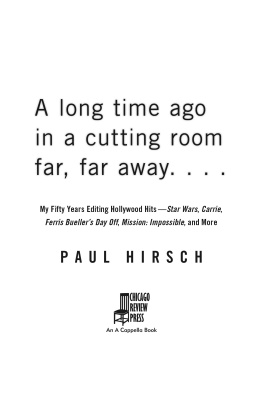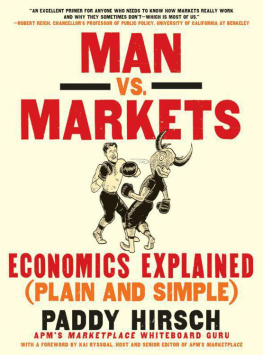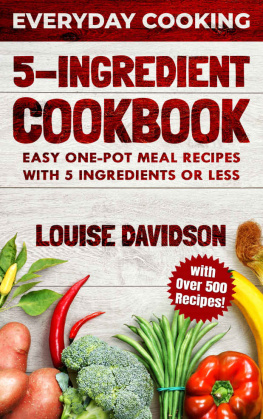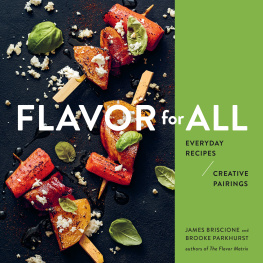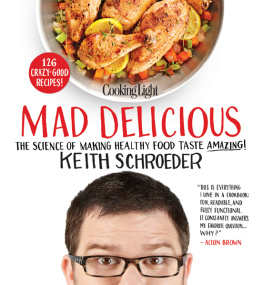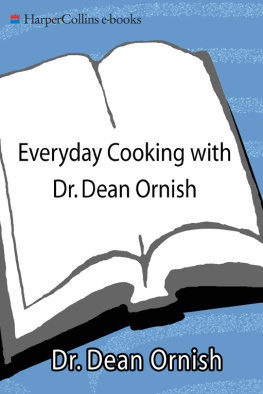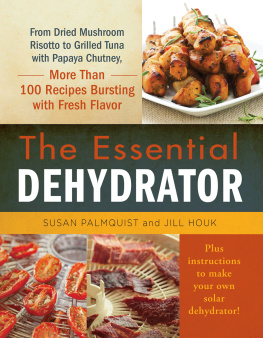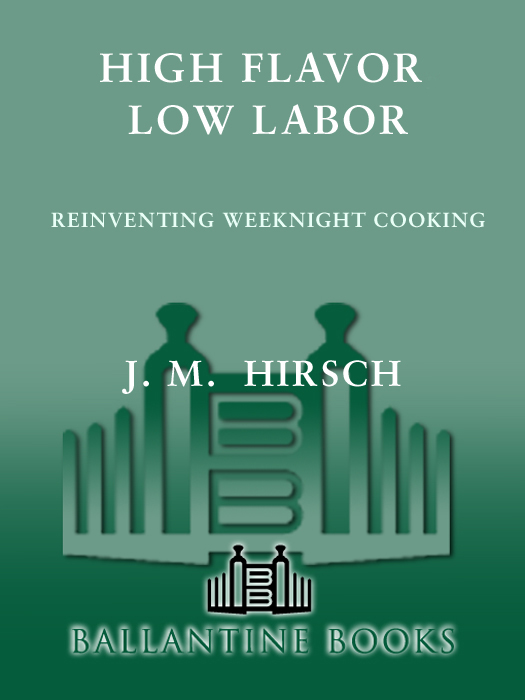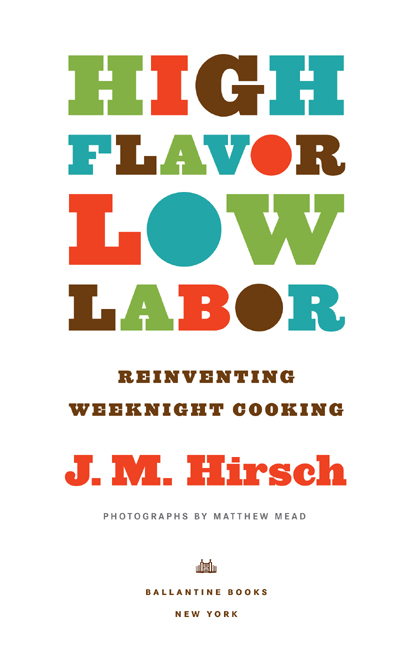Copyright 2010 by Jason M. Hirsch
All photographs, except copyright page photograph, copyright 2010 by Matthew Mead
All rights reserved.
Published in the United States by Ballantine Books, an imprint of The Random House Publishing Group, a division of Random House, Inc., New York.
B ALLANTINE and colophon are registered trademarks of Random House, Inc.
Copyright page photograph by Holly Ramer.
LIBRARY OF CONGRESS CATALOGING-IN-PUBLICATION DATA
Hirsch, J. M.
High flavor, low labor : reinventing weeknight cooking / J. M. Hirsch.
p. cm.
Includes index.
eISBN: 978-0-345-53006-6
1. Quick and easy cookery. 2. Cookery, International. I. Title.
TX833.5.H585 2010
641.555dc22 2010014951
www.ballantinebooks.com
v3.1
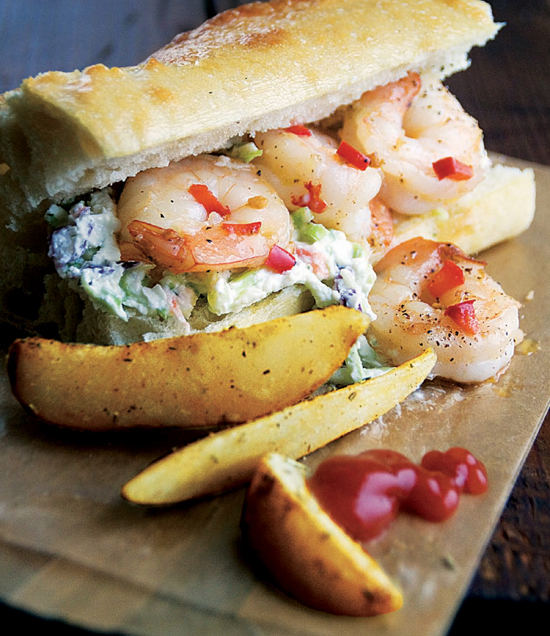
To Parker, my son.
You are my world.

CONTENTS

THE INITIAL STUFF
Weeknight cooking is no time for nuance. Meals must stand and be noticed. They must cut through the clutter of weekday chaos. And they must do it quickly and without fuss, mess, or toil.
It requires what I call blunt force cooking, a brash approach to cooking that cranks the flavor and rolls its eyes at bashful ingredients. It balances my desire for real and satisfying food with the demands of my real and overscheduled life.
Its a simple premise. Let high-flavor ingredients do most of the work. Foods that taste great going into the pot need less work from you to taste great when they come out. Im talking about the Parmesan cheeses, balsamic vinegars, jalapeos, chorizos, and wasabis of the world.
A ham and cheese, for example. Fine as is, but swap out the provolone with manchego or aged gouda and put prosciutto in place of the ham, and fine becomes fantastic. Ditch the sliced bread for baguette smeared with chutney, pop the whole thing in the oven, and you have something seriously special. And all for about the same effort as a ham and cheese.
Spaghetti and meatballs are good, but spike the sauce with balsamic vinegar and finely chopped sun-dried tomatoes, and you get mouth-puckering greatness. Or lose the sauce altogether, pop some crumbled blue cheese into your meatballs, and toss the whole thing with melted butter and minced garlic.
Cooking this way requires no particular genius or skill, and certainly not much time. I lack all of these. It takes just a bit of thought about which ingredients can best ramp up the flavors of a dish.
As food editor for The Associated Press, its my job to help Americans sit down to great meals. That means creating recipes for flavorful, beautiful food that dont infringe on the rest of our lives. It means showing that real food and real flavors can be convenient and satisfying.
My expertise is the same as yours. Im not a chef. Im just a dad with a six-year-old in constant need of feeding, cleaning, and ferrying; a journalist wife forever on deadline; and a demanding job with the pressure of a nation watching over my shoulder every time I stand in front of the stove. What I dont have is time to fuss over dinner. Meals must be fast, flavorful, easy, and real.
For many families, real is the stickler. We all need to nuke dinner now and again. But for the health of our bodies, our families, and our communities, it is better to prepare and enjoy food with our loved ones. This is how we connect, how we teach our children the value of family and food.
Not that I can spare much time for this. And no one has to. Grocers today are jammed with flavorful ingredients. What follows are nearly 150 of my favorite weeknight recipes that draw on those foods.
Blunt force cooking is an easy way to embrace family meals, a hectic lifestyle, and satisfying food. And despite the name, kitchen trauma is kept to a minimum.
THE PHILOSOPHICAL STUFF
Too many cookbooks kill off too many trees trying to micromanage your kitchen, instructing you on everything from the best time of day to grocery shop to the finer points of alphabetizing your spices. My eyes are rolling just thinking about it.
So while my patented technique for washing, sorting, and storing produce might prove titillating, Ive kept such drivel to a minimum. Here, in as few words as possible, is my cooking philosophy. Youre on your own if you need advice about organizing your canned beans.
I buy organic. Reducing pesticides is better for my family and the environment.
I buy local as much as possible. Supporting local businesses is better for my community and the environment, and therefore my family.
I buy whole foods: the dairy, produce, meats, and grains found mostly along the outer aisles of the grocer. Processed foods are exactly what they sound like. So is real food. Not enough children know the difference. Its important that they do.
I value convenience and shortcuts where and when they make sense. Packaged, processed meals dont fly for me, but canned beans, bottled lemon juice, and frozen fruit make total sense for time-pressed cooks.
I shop broadly, trying ethnic and unusual items even when I havent a clue what to do with them. This is often. This keeps cooking and eating interesting.
I stock my pantry and freezer with stuff that keepsbeans, pasta, rice, meats, seafood, seasoningsbecause that makes it easy to prepare good dinners on otherwise bad nights.
I involve my son in the shopping and cooking. It isnt always easy or fun, but nothing about raising children is always easy or fun.
I let high-flavor ingredients do most of the work for me. Foods that taste great going into the pot need less work from me to taste great when they come out.
THE BASIC STUFF
In this book, ease and flavor rule. Even recipes that seem unfamiliar dont stray far from the everyday comfort cooking you know and need. Each recipe is either an easier, more flavorful rethinking of a familiar dish or an introduction to one that has lots in common with those you already love.
As in has everything you love about heavyweight pies, but with more flavor and less effort.
Not only wont blunt force cooking take you outside your comfort zone, it probably wont even take you outside your favorite grocer. Start in the international aisle. Nearly anything you grab is going to be jammed with flavor.
TECHNIQUES
Im not big on fancy techniques, mostly because I dont know any. But there are some that are so ridiculously easy anybody can use them. These are the six I rely on regularly to amplify flavor.
Blooming and Toasting
These are fancy terms for heating your herbs and spices. It works because seasonings contain highly flavorful oils and heat draws out the oils. There are two ways to do this. The first is to toast spices, especially whole ones, in a dry skillet over medium heat for up to a minute.
The second, called blooming, is to briefly heat them in oil, butter, or another fat before adding other ingredients. This is good for ground and dried seasonings used in soups, chili, and sauts, such as my .





